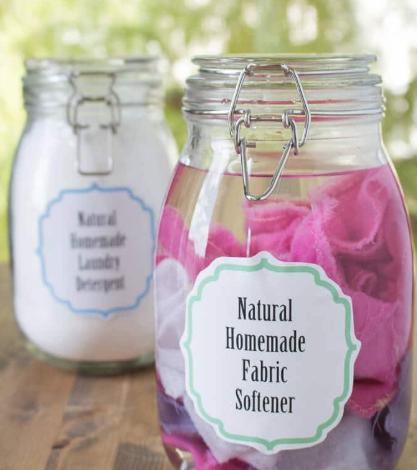
How to Care for Delicate Fabrics Like Silk, Lace, and Satin
Delicate fabrics such as silk, lace, and satin require special attention to maintain their beauty and longevity. These materials, while luxurious, can be easily damaged if not cared for properly. From washing and drying to storing and ironing, here’s a guide on how to keep these fabrics in pristine condition.
Why Delicate Fabrics Need Special Care
Silk, lace, and satin are more sensitive than regular fabrics. These materials can easily be damaged by moisture, heat, or friction. For instance, silk is a natural protein fiber that is highly susceptible to damage from water and heat. Lace, with its intricate design, is fragile, while satin’s glossy surface can easily snag or lose its sheen.
Because these fabrics are often used in special garments such as evening wear, lingerie, or heirloom pieces, any damage can be costly and difficult to repair. That’s why extra care is essential to preserve their texture, color, and overall appearance.
Washing Delicate Fabrics
When it comes to washing delicate fabrics, always refer to the care label. In most cases, hand washing is the safest method.
- Silk: Use cool water and a mild detergent specifically designed for delicate fabrics. Avoid regular laundry detergents as they can strip silk of its natural oils, causing the fabric to lose its softness and shine. Gently agitate the fabric, ensuring it doesn’t twist or wring. Rinse thoroughly with cool water and roll the fabric in a clean towel to remove excess moisture. Lay it flat to air dry.
- Lace: Lace is often used in garments like lingerie or bridal wear, so it requires special attention. Use a gentle detergent and avoid scrubbing or twisting the fabric, which could cause it to tear. For added protection, place lace garments in a mesh bag before washing. When drying, reshape the lace and lay it flat to preserve its delicate design.
- Satin: To wash satin, soak it in cold water with a mild detergent. Avoid scrubbing or wringing, as this can cause the fabric to lose its smooth surface. After washing, gently press out the water, then lay it flat to dry.
Drying Delicate Fabrics
Machine drying should be avoided for silk, lace, and satin because the heat can cause these fabrics to shrink or lose their finish.
- Air Drying: Lay your delicate garments flat on a clean towel or drying rack. Avoid hanging them as this can distort their shape. For quicker drying, you can use a fan, but never point it directly at the fabric to prevent uneven drying.
- Sun Exposure: Keep delicate fabrics away from direct sunlight, which can cause fading or make them brittle over time.
How to Store Delicate Fabrics Properly
Proper storage is crucial for maintaining the integrity of delicate fabrics. Here are some key tips:
- Clean and Dry: Always ensure garments are completely dry before storing them. Moisture can lead to mildew, which can damage the fibers.
- Breathable Storage: Use cotton or linen garment bags to store silk, lace, and satin. These materials allow airflow while protecting the fabric from dust and dirt. Avoid plastic bags, as they trap moisture and can lead to mold.
- Use Natural Moth Repellents: Cedar wood is an excellent option to keep moths away from natural fabrics like silk. Cedar blocks, sachets, or rings can be placed in storage areas to deter pests and keep your garments smelling fresh.
- Avoid Sharp Folds: When folding delicate fabrics, be gentle. Avoid creating sharp creases. For extra protection, place acid-free tissue paper between folds.
Ironing Delicate Fabrics
Ironing delicate fabrics requires care to avoid damaging their delicate fibers.
- Silk: Iron silk while it is still slightly damp. Use the lowest heat setting on your iron and always test on an inconspicuous area first. Alternatively, place a clean cloth between the iron and the fabric to prevent direct contact.
- Lace: Never iron lace directly. Instead, place a towel over the fabric and iron gently to preserve its texture.
- Satin: Iron satin on the reverse side, using a cool iron setting to avoid creating shine marks. Always handle satin gently to preserve its glossy finish.
Preventing Long-Term Wear and Tear
Delicate fabrics require special attention to prevent wear and tear over time. Here are some tips for ensuring they last longer:
- Limit Frequency: Don’t wear delicate fabrics too often. Silk and satin, in particular, can weaken with regular exposure to body oils and lotions. Allow these fabrics to rest between wears.
- Immediate Repairs: If you notice any damage, such as loose threads or small tears, address it right away. A professional tailor can help with repairs that restore the fabric’s original appearance.
- Store with Care: Consider using moisture-absorbing sachets or silica packs in storage areas to prevent mildew. Cedar wood can also help keep fabrics fresh and protect them from pests.
By following these steps, you can extend the life of your delicate fabrics and keep them looking their best. With proper washing, drying, storage, and handling, your silk, lace, and satin garments will remain beautiful and elegant for many years to come.






